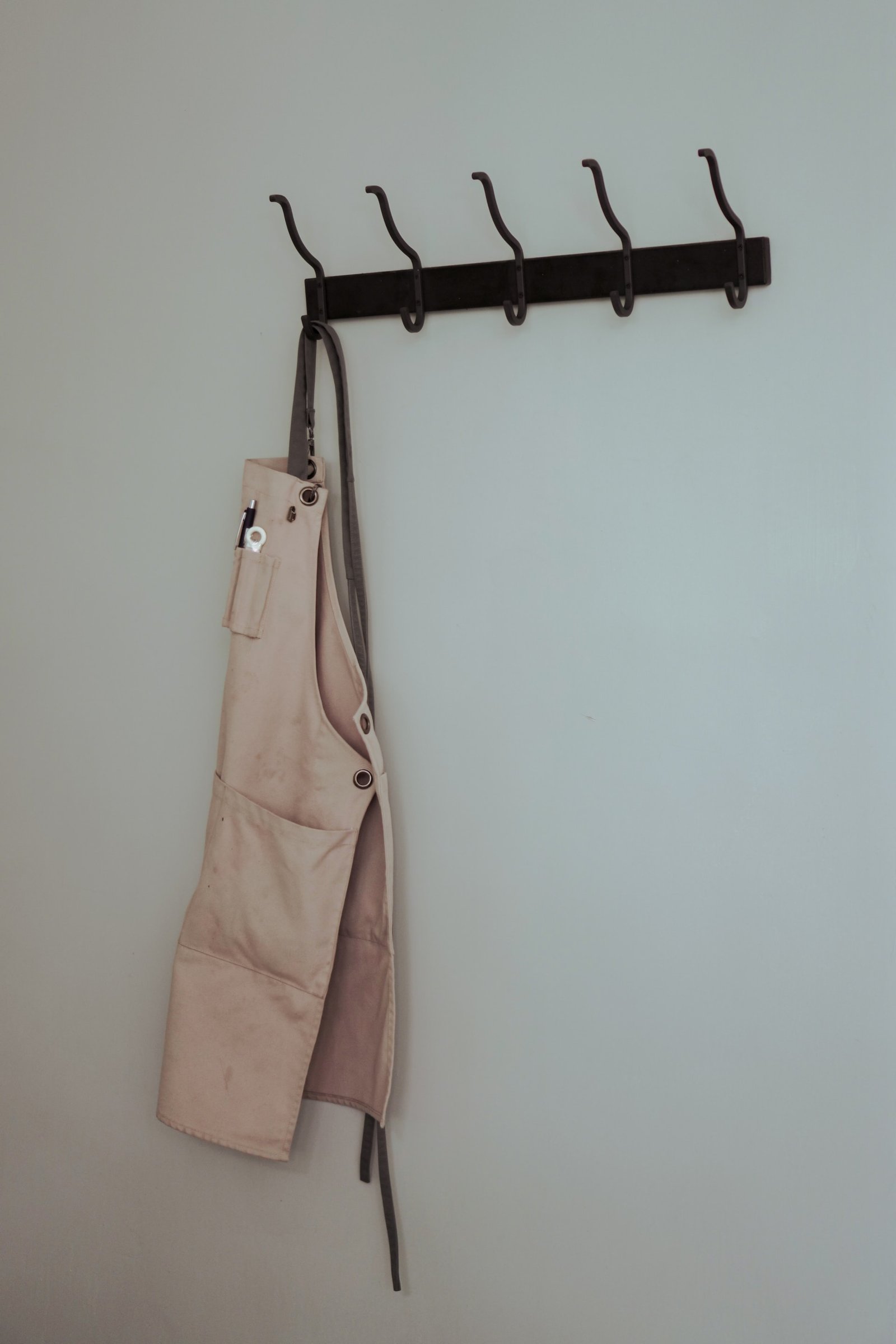Will Clay ruin My Clothes? The easiest tips for beginners!
The process of working with clay is dynamic and exciting. You know how to work with a material that you have to mix with water so that the clay can bond, shape, and prepare to make vessels, clay objects, or mix until it gets the appropriate softness.
You can wash the clay from the material you are wearing so the clay won’t ruin your clothes. Wait for clay to dry and then easily scrape it from the surface of your clothes.
This text can help you find the most effective ways to maintain your wardrobe after working with clay.
Can You Wash Clothes with Clay on Them?
When working with clay, it does not enter into the composition of your fabric, so the fabric does not absorb clay. However, clay can stick to the wardrobe and thus complicate the maintenance process.
One of the suggestions is to dry it completely and scrape the dried clay off the surface of your wardrobe so that it does not enter the washing machine and leave sediment in the drum or drain pipes of your washing machine.
If this way of cleaning the wardrobe from clay residues is not enough, you can soak the wardrobe with an equal amount of detergent and water. Liquid detergents have enzymes that can dissolve clay particles, so you can wash your clothes in the regular program of the washing machine.
Does Pottery Clay Wash off?
Although it seems scary when you see persistent stains obtained from working with clay, our advice is not to be desperate. The clay is easily removed from the fabric, although it is a bit darker, red, and terracotta can give a headache. Even in the fight against such dark clay stains – there is a solution!
The advice may be to choose more carefully the wardrobe in which you will work with clay:
- a cotton T-shirt that can be boiled
- an apron over a uniform that can get dirty and stain
- old shoes intended for work in the studio, for which you do not have to worry too much if you stain them with clay or water after mixing with clay.
However, there are effective ways to remove clay from the fabric, once you smear or stain it. Earlier in this text, we advised you to dry the clay and scrape it off the fabric, as well as soaking it with an equal amount of liquid laundry detergent and water.
After soaking the stain, you can wash it in the regular program. If you still fail to remove persistent stains, below we offer you a few more alternative solutions.

Use an apron when working with clay and keep your clothes protected!
How do You Wash Clay out of Clothes?
Another way to remove clay stains from your clothes is to:
- Mix a cup of white vinegar with three teaspoons of salt. You should put this mixture on your stained clothes and let it stand for about 30 minutes.
- When the time is up, wash off the mixture of vinegar and salt applied to your wardrobe. After that, wash the clothes in the standard washing program.
- If a stain remains, repeat the process. However, it is useful to know that products such as vinegar or baking soda can damage the material in your wardrobe, so they should be handled with care or use the services of professional laundries.
When working with clay, soiling clothes and stains caused by spraying are inevitable. If you have already chosen a “work uniform” in which you work with clay, you are not sorry to soil it.
You should, however, wash all the pieces of clothing that make up your uniform more often in order not to leave too many clay deposits on the wardrobe.
Prior to removing the clay, scrape off any remaining residue from the clothing using a spoon, making sure to scrape in the fabric’s direction rather than across it. Thus the clay and the clay surface can remain stuck between the threads of the fabric and leave a persistent stain that cannot be removed.
- The combination of detergent and ammonia can also help you clean stubborn stains on your clay wardrobe.
- However, we recommend caution, since ammonia and baking soda do not mix, since they are counterproductive: while ammonia is acidic, baking soda is basic, so they cancel each other’s effect on your wardrobe.
Take special care if you wear sensitive types of materials while working, such as silk and wool. They can be damaged due to cleaning and washing with acid-based products, which is why they should be avoided when working with clay.
How Do You Get Air-dry Clay out of Clothes?
It is likely that most of the moisture in the clay has evaporated, leaving stains on your clothes because the clay has been sitting there for a long time. Thus air-dried clay can be removed from the wardrobe.
The easiest way to remove it is to first of all:
Scrape off the remnants of dried clay from the wardrobe, with a blunt knife or a metal spoon
- Soak the clothes in a mixture of detergent and water and leave it to soak for a while
- Wash clothes in the regular program in the washing machine.
- If the stains are persistent and remain after the first wash, repeat the process once more, because the remains got stuck between the fibers of your wardrobe, so you have to wash them after rinsing and working with the washing machine.
Even clay manufacturers recommend this way of washing and removing clay stains, with the warning that this is advice for adults and does not guarantee results, since it does not have the same effects for all types of materials.
We have already written about the specifics of materials such as silk and wool, remember? Try not to work in a wardrobe that contains these materials, as they are sensitive to maintenance.
Can You wash Clay-splattered Clothing in the Laundry Machine?
If you are thinking about the easiest and most difficult way to remove clay from fabric, the wardrobe you wear while working is the least of the problems. During rainy days, children play in the yard or on the playground, jump on muddy puddles, so it is very likely that they will transfer mud, dirt and clay, shoes, and clothes.
The dirt and clay from the ground will transfer to the carpet or path in the entrance hall as soon as you enter your house or apartment. This is a slightly bigger problem when it comes to household maintenance, but it is solvable.
The most difficult form of clay staining can be if the remains find their way to pieces of furniture that cannot be inserted into the machine and washed with a quick program.
An equally successful way is to soak the amount of detergent and water on stained pieces of clothing, carpets, or furniture. The wardrobe will end up in the machine, and the carpets, the paths, as well as the upholstery that covers your furniture should be washed with a sponge, cloth, and warm water.
Do not despair if the stains persist after washing the paths, carpets, and furniture. Seek the help of professionals and the problem will surely be solved.
As we wrote earlier, the wardrobe should be treated before washing to remove all changes on the fabric before it ends up in the washing machine.
Choose Carefully!
We believe that the process of working with clay is a real pleasure. If making items from clay is your passion, you should not be prevented from choosing clothes or thinking about how you can remove stains and clay residues from clothes.
First of all, determine what you will be working on: whether it is a cotton T-shirt, old pants, or shoes that are already damaged, so you are not sorry if you stain any of them.
Another thing, an apron is the best way to protect your wardrobe, because you will probably wipe your hands on it when you finish one cycle of working with clay.
The hand sanitizer most effectively removes clay residues from the hands. Alcohol can damage your hands, and washing your hands in water does not guarantee that all the clay residue will come off your hands.
Spraying water with clay remains should not discourage you from creating creative pieces, making jewelry, or clay pots, but on the other hand, you should not think too much about removing the clutter you leave behind, or how to remove clay remains from your wardrobe. which you wear.
You have received very precise advice in the text on how to best deal with this problem, we wish you good luck in your work and success in removing clay stains!







